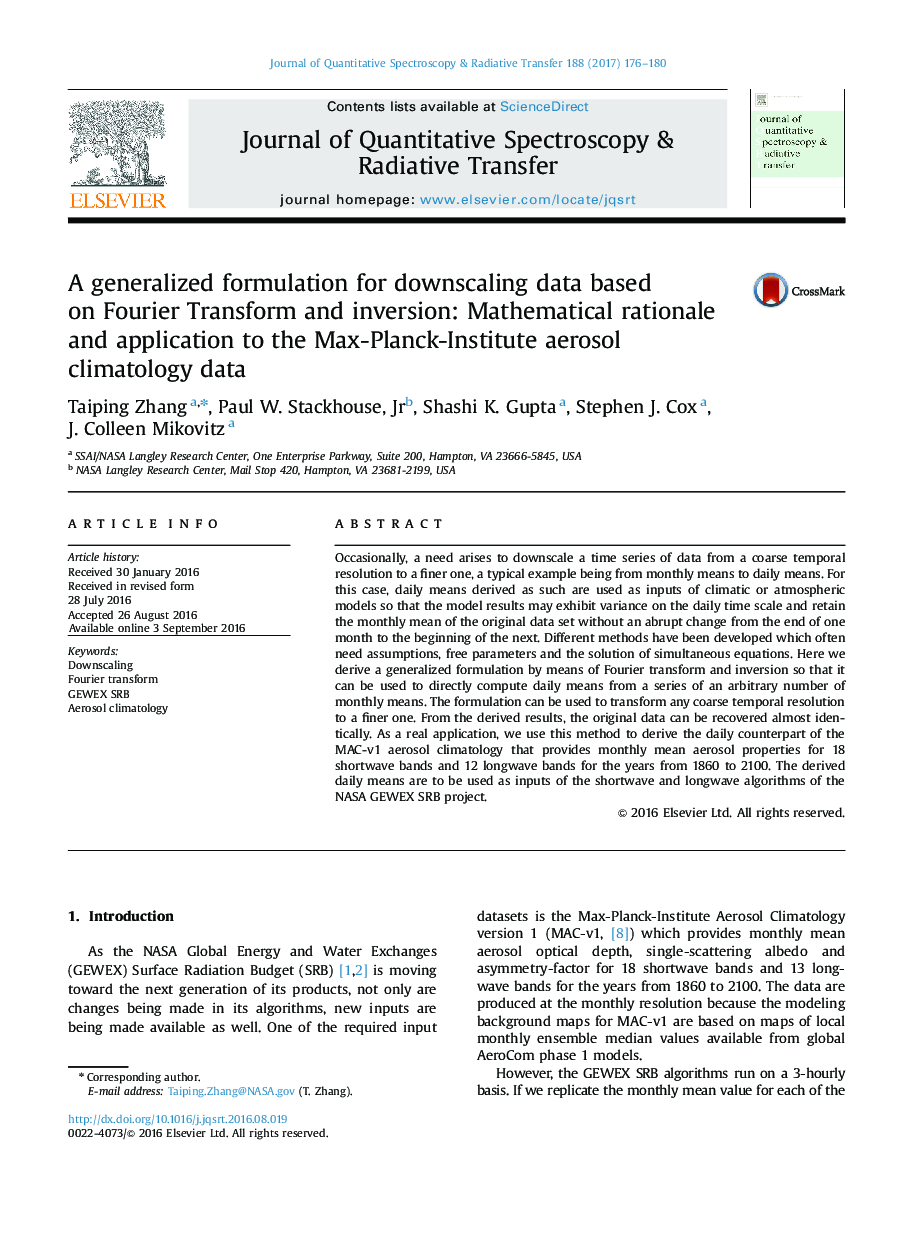| Article ID | Journal | Published Year | Pages | File Type |
|---|---|---|---|---|
| 5427292 | Journal of Quantitative Spectroscopy and Radiative Transfer | 2017 | 5 Pages |
â¢Explained the mathematical relationship between monthly and daily means.â¢Derived formulation for computing daily means from monthly means.â¢The derivation is by means of Fourier transform.â¢It does not invoke the need to solve a simultaneous system of equations.â¢The method is applied to the Max-Planck-Institute Aerosol Climatology data.
Occasionally, a need arises to downscale a time series of data from a coarse temporal resolution to a finer one, a typical example being from monthly means to daily means. For this case, daily means derived as such are used as inputs of climatic or atmospheric models so that the model results may exhibit variance on the daily time scale and retain the monthly mean of the original data set without an abrupt change from the end of one month to the beginning of the next. Different methods have been developed which often need assumptions, free parameters and the solution of simultaneous equations. Here we derive a generalized formulation by means of Fourier transform and inversion so that it can be used to directly compute daily means from a series of an arbitrary number of monthly means. The formulation can be used to transform any coarse temporal resolution to a finer one. From the derived results, the original data can be recovered almost identically. As a real application, we use this method to derive the daily counterpart of the MAC-v1 aerosol climatology that provides monthly mean aerosol properties for 18 shortwave bands and 12 longwave bands for the years from 1860 to 2100. The derived daily means are to be used as inputs of the shortwave and longwave algorithms of the NASA GEWEX SRB project.
